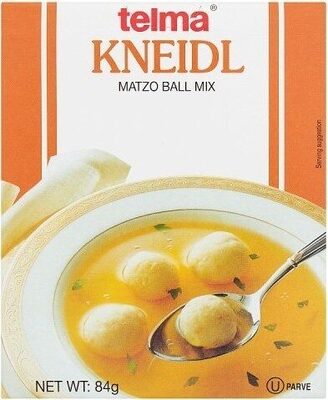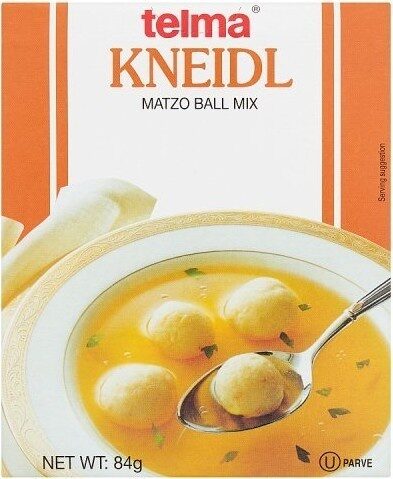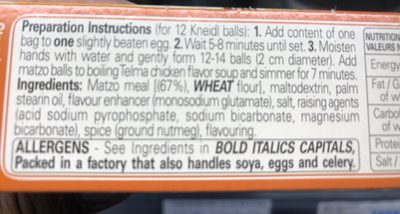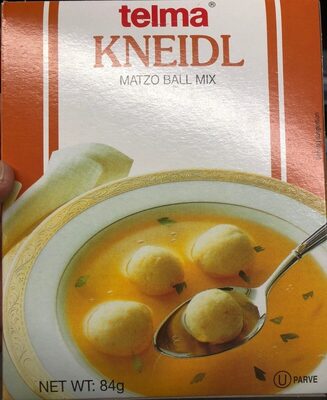Matzo Ball Mix - telma - 84g
This product page is not complete. You can help to complete it by editing it and adding more data from the photos we have, or by taking more photos using the app for Android or iPhone/iPad. Thank you!
×
Barcode: 0084685400010 (EAN / EAN-13) 084685400010 (UPC / UPC-A)
Quantity: 84g
Packaging: Box
Brands: Telma
Categories: fr:Preparation
Labels, certifications, awards: Sustainable, Kosher, Sustainable Palm Oil, Kosher-parve
Origin of ingredients: Israel
Manufacturing or processing places: Israël
Countries where sold: France
Matching with your preferences
Environment
Packaging
Transportation
Threatened species
Report a problem
Data sources
Product added on by kiliweb
Last edit of product page on by 5m4u9.
Product page also edited by gudith, openfoodfacts-contributors, org-app-foodbowel, packbot, roboto-app, yuka.VExFc0NmaGF0c0lXbzhVMzR4WDV4dDR2bXJPeUFEL3ZFc01kSVE9PQ, yuka.sY2b0xO6T85zoF3NwEKvlhwWCYrhnSPObDnvmEiZ5vqyAYTFQvNPu4b6Cqs.











